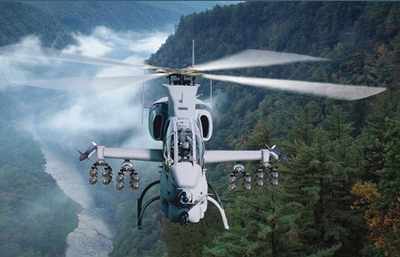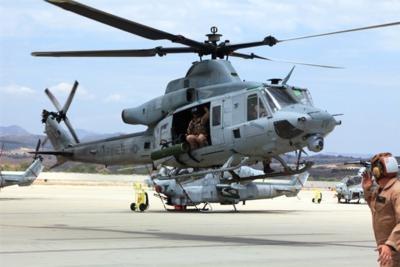AH-1Z and UH-1Y Helicopters Prove Robust & Reliable
Textron Aviation confirmed that the U.S. Marine Corps’s extant H-1 fleets of AH-1Z Viper combat helicopters and UH-1Y Venom utility helicopters have cumulatively surpassed 500,000-flight hours.

The milestone achievement represents the combined total flight times of nearly four-hundred AH-1Z and UH-1Y helicopters built by Textron subsidiary Bell and operated by the U.S. Marine Corps and the militaries of numerous NATO nations.
The H-1 upgrade program is a United States Marine Corps's initiative undertaken for purpose of developing the AH-1Z Viper and UH-1Y Venom helicopters. Subject machines replaced the service’s aging fleets of AH-1W SuperCobras and UH-1N Twin Hueys respectively. The H-1 contract was awarded to Bell, the original manufacturer of both aircraft, in 1996, and tasked the helicopter-maker with designing new, modernized, attack and utility helicopters featuring considerable design commonality.
Bell H-1 vice-president and program director Mike Deslatte stated: “The H-1 continues to be the premier example of a family of aircraft that can do more with less and deliver unmatched interoperability and expeditionary agility. We are thrilled to reach this tremendous milestone and excited for the future of both the Viper and the Venom as they continue to grow in number and capability around the world.”
The H-1 Viper and Venom have afforded the Marine Corps enhanced operational versatility. Moreover, both variants have proved excellent hosts for advanced weapon and datalink systems.
Bell H-1 program manager manger Nate Green set forth: “We are proud that the first 500,000 flight hours of the UH-1Y and AH-1Z included constant deployments to austere deserts, numerous types of naval vessels, and frigid cold environments in support of U.S. and allied service members on the ground and at sea. With the Viper and Venom sharing 85-percent commonality of parts, a major advantage of this program is that a single readiness improvement or capability upgrade can often support both aircraft.”
By virtue of its work on the Marine Corps Structural Improvement Electrical Power Upgrade (SIEPU) program, Textron Bell supports the future of the H-1 fleets.

Structural and electrical modifications implemented by way of the SIEPU program promise to broaden the aircrafts’ mission capabilities, enhance aircrew safety, and improve interoperability. Currently, Bell is working to increase the electrical power capacity of the airframe and powerplant architectures shared by its AH-1Z and UH-1Y helicopters—thereby ensuring the aircrafts’ ability to support the integration of future offensive, defensive, and data technologies.
Mr. Deslatte added: “This milestone highlights the crucial missions our customers have accomplished with the H-1 during this time. Congratulations to the U.S. Marine Corps and their allies on this tremendous milestone. Bell is proud to be your partner on this platform.”
To support worldwide operations thereof, Bell provides diverse and comprehensive services to H-1 squadrons, including parts, maintenance, training, and on-site field representatives.
 Aero-News: Quote of the Day (04.28.25)
Aero-News: Quote of the Day (04.28.25) ANN's Daily Aero-Term (04.28.25): Decision Altitude (DA)
ANN's Daily Aero-Term (04.28.25): Decision Altitude (DA) ANN's Daily Aero-Linx (04.28.25)
ANN's Daily Aero-Linx (04.28.25) Airborne-Flight Training 04.24.25: GA Refocused, Seminole/Epic, WestJet v TFWP
Airborne-Flight Training 04.24.25: GA Refocused, Seminole/Epic, WestJet v TFWP Aero-News: Quote of the Day (04.29.25)
Aero-News: Quote of the Day (04.29.25)




